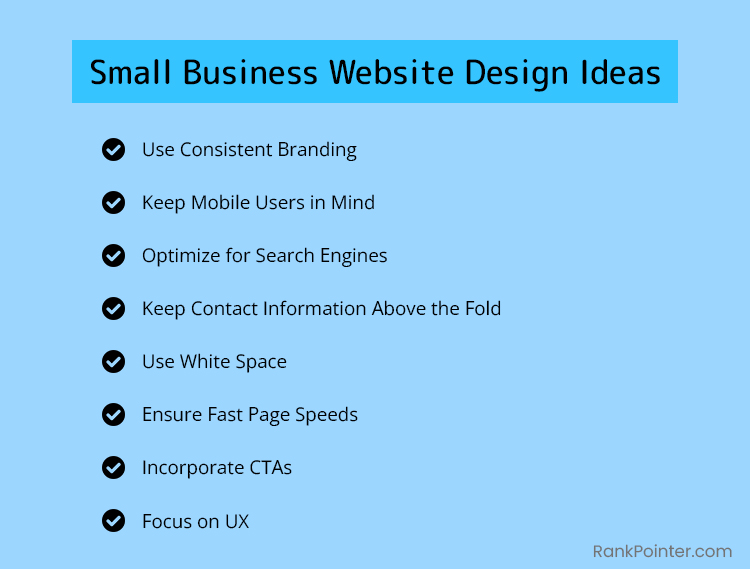Creating a captivating small business website can be a challenge, especially with limited resources. Yet, with the right guidance, you can craft a remarkable online presence that leaves a lasting impact on visitors. Explore this list of top-notch small business website design ideas and best practices to help you build a stunning online presence.
Tips on Website Design for Small Business
1. Use Consistent Branding
Consistency is key in branding. Maintain uniformity in colors, fonts, logos, and visual elements across your website and offline materials.
This builds a strong brand identity, fostering trust and recognition among your audience. Consider creating a branding guide for reference and flexibility in design updates.
2. Keep Mobile Users in Mind
With mobile usage soaring, ensure your website is responsive. Opt for large, clear fonts, a clutter-free layout, and optimized images for seamless viewing on all devices.
Prioritize user experience to cater to the growing mobile audience effectively.
3. Optimize for Search Engines
Boost your online visibility by optimizing your website for search engines like Google.
Use relevant keywords strategically throughout your site, create informative blog posts, and craft compelling meta descriptions and title tags. Enhance user experience and site speed for improved search rankings.
4. Keep Contact Information Above the Fold
Ensure that vital contact details are prominently displayed in the area of your website that is visible without scrolling, known as “above the fold.”
Include essential information such as your business name, address, phone number, email, and links to social media platforms.
This strategic placement facilitates quick access to contact information, encouraging visitor engagement and conversions.
5. Use White Space
Embrace white space in your design to enhance readability and user experience.
White space makes content easier to navigate and highlights important elements like CTAs and contact information. Opt for a clean, uncluttered layout to create a visually appealing website.
6. Ensure Fast Page Speeds
Speed matters in the digital world. Optimize your website for fast loading times by optimizing images, minimizing plugins, and choosing a reliable hosting provider.
Regularly monitor and test page speeds to ensure a smooth browsing experience for visitors.
7. Incorporate CTAs
Guide users towards desired actions with clear and compelling CTAs. Place them strategically throughout your site, above the fold for maximum visibility.
Utilize persuasive language and specific instructions to prompt user engagement and drive conversions effectively.
8. Focus on UX
Prioritize user experience to keep visitors engaged and satisfied. Design for easy navigation, readability, and mobile responsiveness.
Regularly test your website for functionality and address any usability issues promptly. A positive UX enhances customer satisfaction and encourages repeat visits.

Small Business Website Design Templates
Small business owners can explore a variety of website design templates on platforms like Dribbble, TemplateMonster, and ThemeForest.
These resources offer a diverse selection of professionally created templates to suit different industries and design preferences, facilitating easy website development.
Conclusion of Small Business Web Design Tips
Creating a visually appealing and user-friendly website is essential for small businesses to succeed in a competitive market. By implementing these best practices, you can create a compelling online presence that attracts, engages, and converts visitors into loyal customers.


